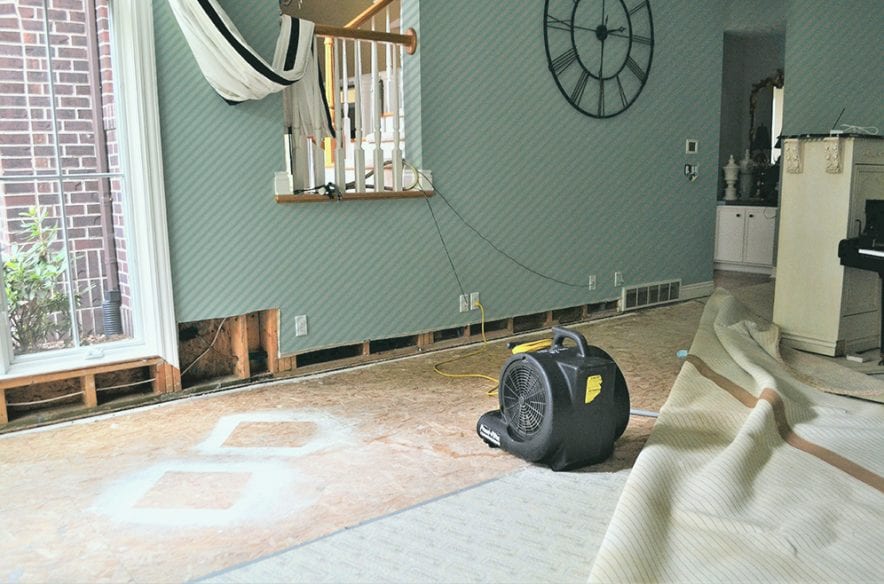Starting a water damage restoration business can be difficult and time-consuming. You need to invest in the right equipment, such as water extraction pumps, water removal fans, water dryers, dehumidifiers, and more. According to Water Damage Kings, these are 8 must-have tools for a successful water damage restoration business.
Moisture meters
Moisture meters are water damage restoration equipment that helps determine the extent of water damage in a home. They are water damage restoration equipment used to detect moisture levels inside homes during water removal projects.
Also read; 7 Reasons To Hire a Water Damage Restoration Professional
The information provided by moisture meters helps contractors make more informed decisions about how much work needs to be done and the total cost for the job. It also makes them better equipped to prevent mold growth after their services have been completed.
Dryer
Drayer is standard water damage restoration equipment used to remove water after water removal projects. A big part of the water damage restoration process is drying out homes that have been affected by water.
Dryers are usually large dehumidifiers that pull moisture from the air in a room or area using an exhaust duct system and filter it through water damage restoration equipment like desiccant dehumidifiers, which use silica gel beads to absorb excess humidity. This helps make sure mold growth does not occur during water removal projects.
Vacuum cleaners
Vacuum cleaners are water damage restoration equipment used during water damage restoration projects to remove liquid water from the affected area.
During water removal, vacuum cleaners suck up standing water and transport it through a hose connected with water damage restoration equipment so it is not re-released into the environment.
Vacuum cleaners are integral pieces of water removal tools for any water damage restoration business because they speed up drying time by removing excess liquid faster than what would happen if you just removed them manually with buckets or mops.
Air scrubber
Air scrubbers are water damage restoration tools that remove water, water vapor, and odors from the area being dried after a flood or leak has occurred.
Water is sucked into an internal fan which blows it down through water damage restoration equipment where it condenses on cool surfaces inside of the unit itself, leaving clean air behind for your employees and customers.
When you need to ensure there isn’t any mold growth during water damage restoration projects due to excess moisture leftover after drying with fans alone, then choose an air scrubber because they provide this added benefit while also removing all contaminants like smoke and other smells that can be embedded in drywall and other water damaged areas.
This air scrubber will remove any excess moisture that is left behind in these structures which can cause mold growth later on if not properly dried with a dehumidifier to ensure you get everything completely dry before putting it back.
Axial Air Movers
Axial Air Movers are a must-have tool for water damage restoration professionals because they move air around quickly and allow you to dry water-damaged structures faster.
In addition, if the water damage is from flooding or an overflowing sink then this will also reduce drying time in these areas because it moves water away so much more efficiently than a fan alone by removing excess moisture at its source.
This can result in fewer repairs being needed after water damage restoration which saves money in the long run while also making your job easier since there won’t be any mold growth due to extended periods of high humidity left behind when using fans only.
By choosing Axial Movers instead of standard blower-style dehumidifiers, you’ll have all the benefits that come along with having
Heaters and Dehumidifiers
When water damage restoration is complete and drying has been achieved, you may need to provide heat for a short period of time. This helps the home dry even more quickly which reduces your risk of future water damage since water trapped in pockets can lead to mold growth after water damage restoration.
Heating systems should be set no higher than 70 degrees Fahrenheit while keeping windows open for ventilation during this initial phase. It’s also best not to rely on heating equipment that emits humidity into the air such as radiant floor heating or oil-based boilers because it won’t significantly affect relative humidity levels but could potentially add too much moisture back into an area that has already dried out if fans are turned off before this water damage restoration process is complete.


